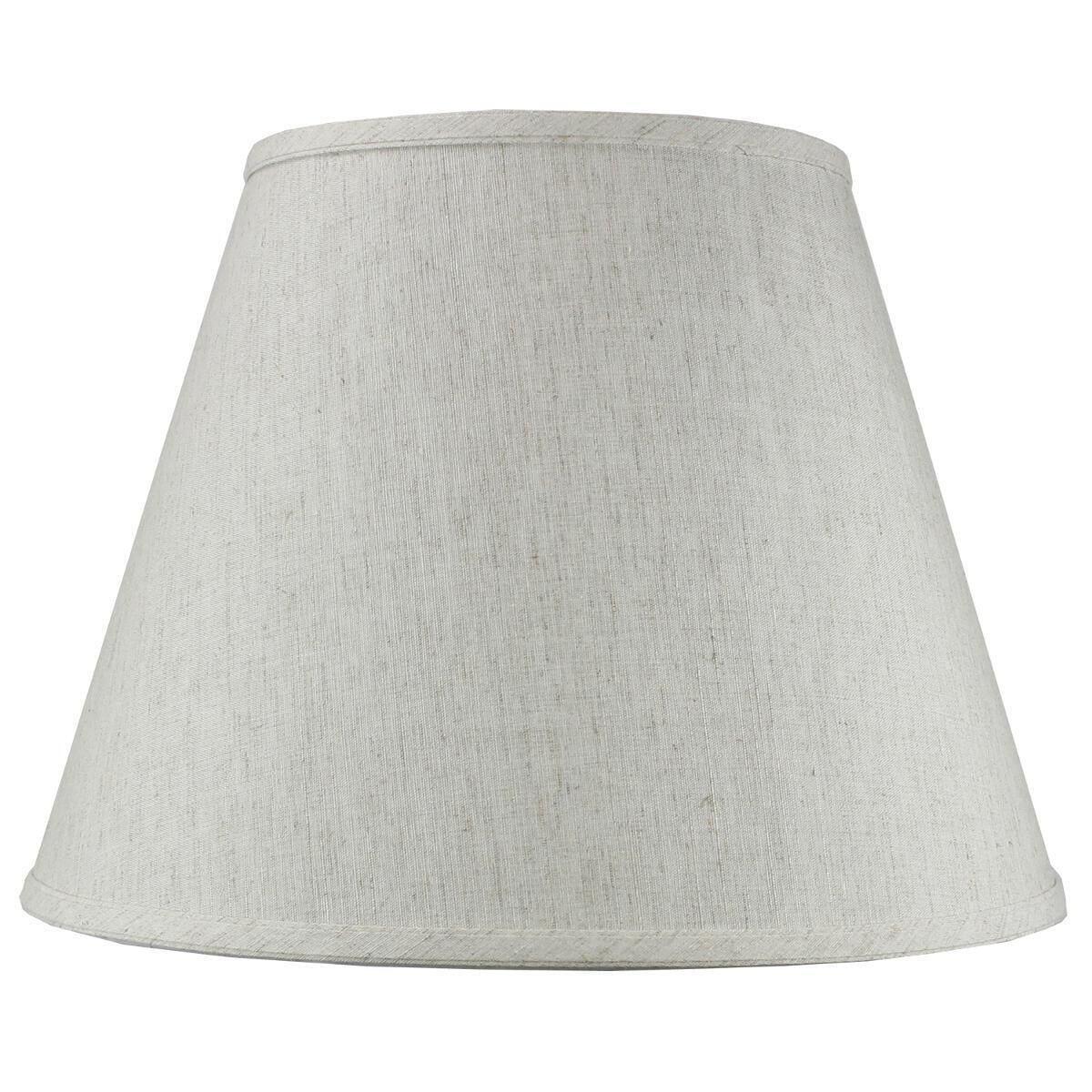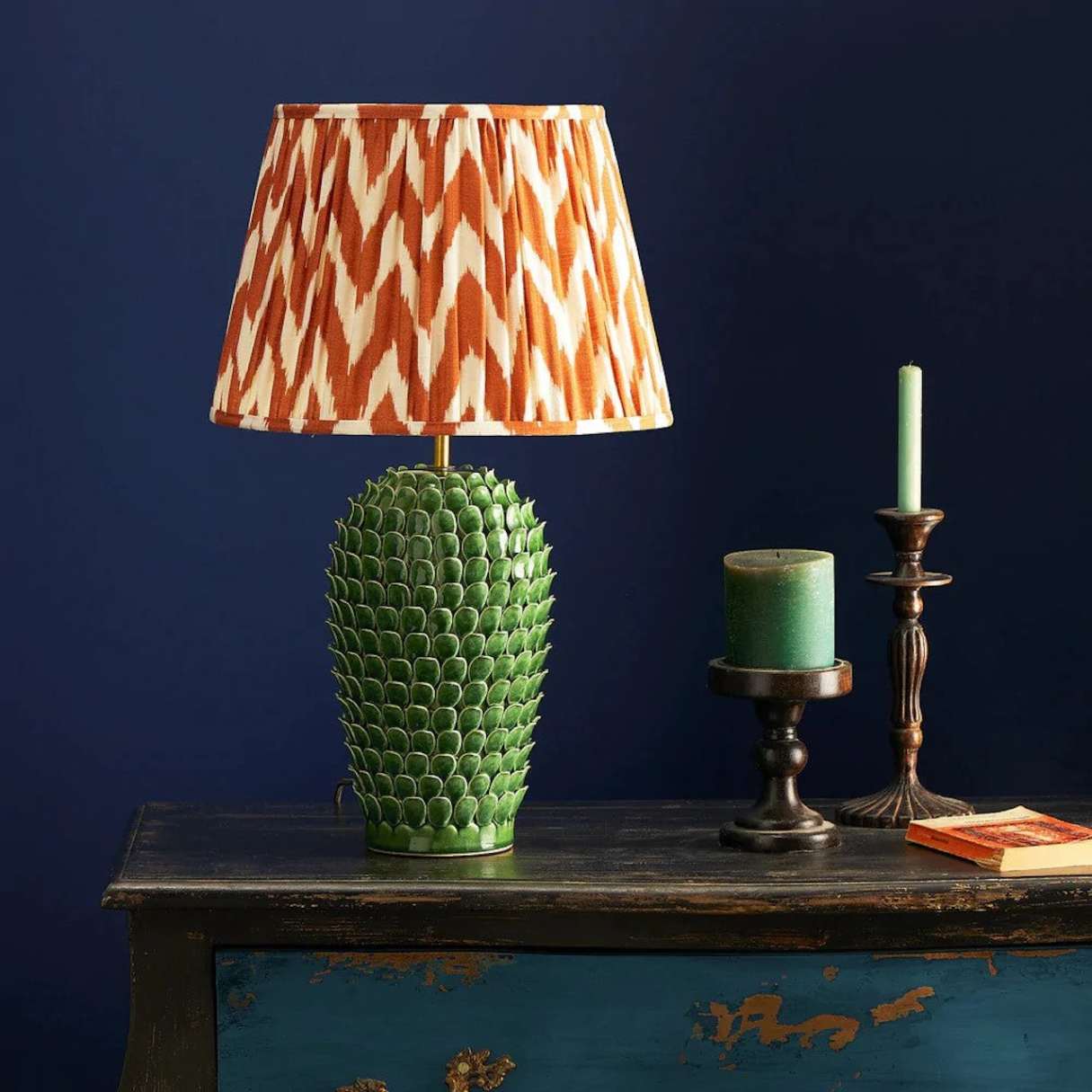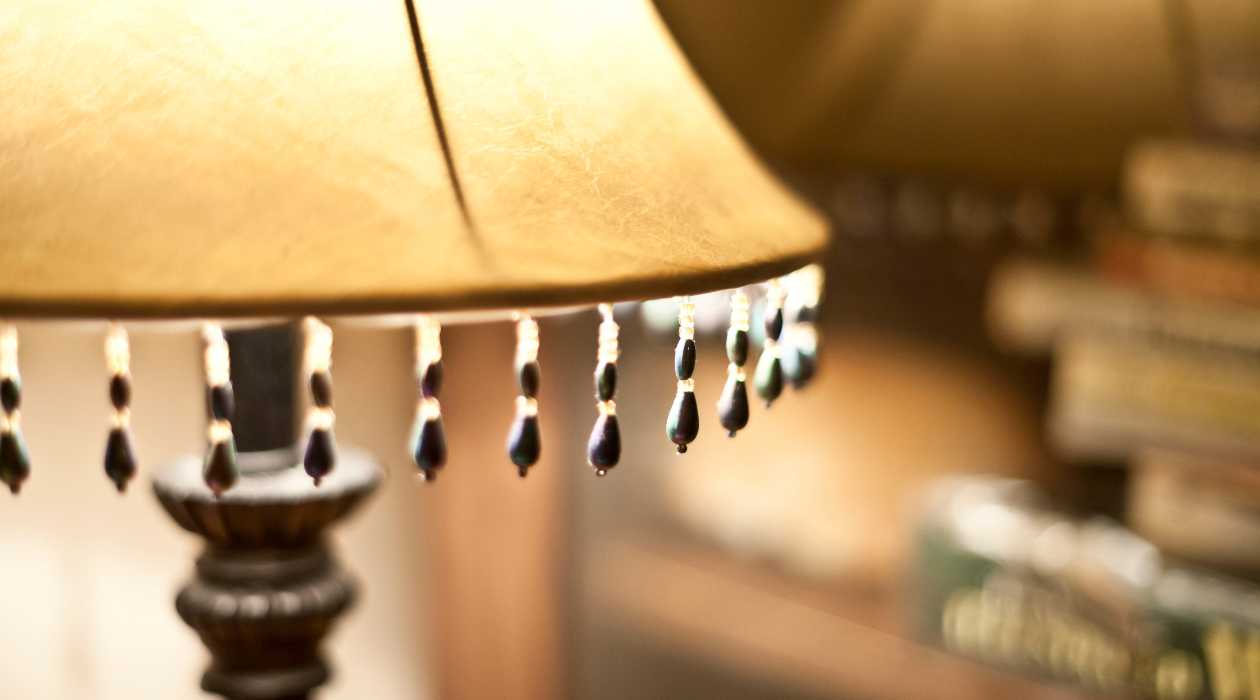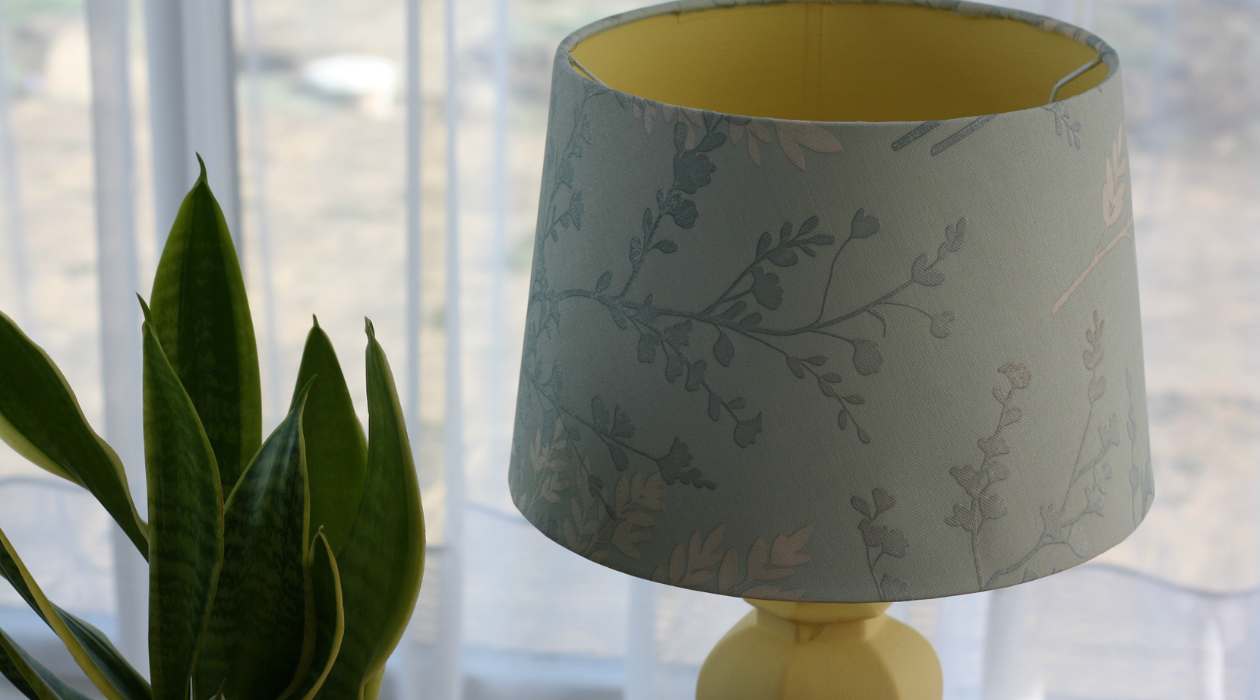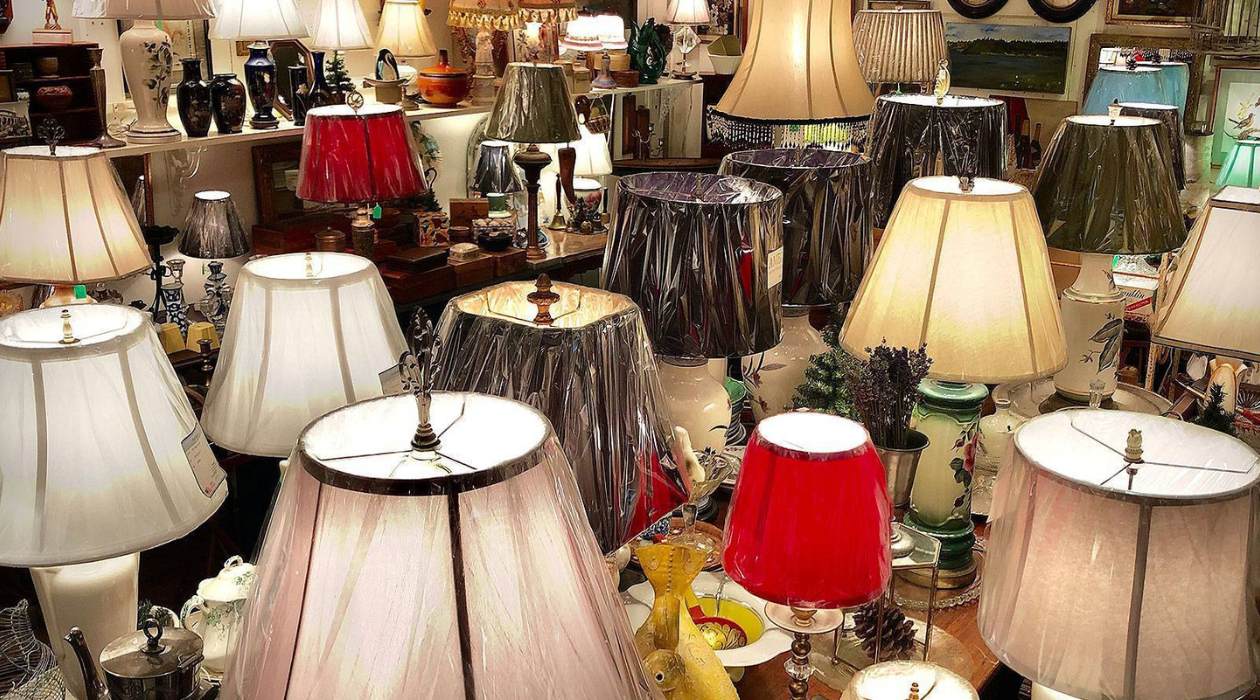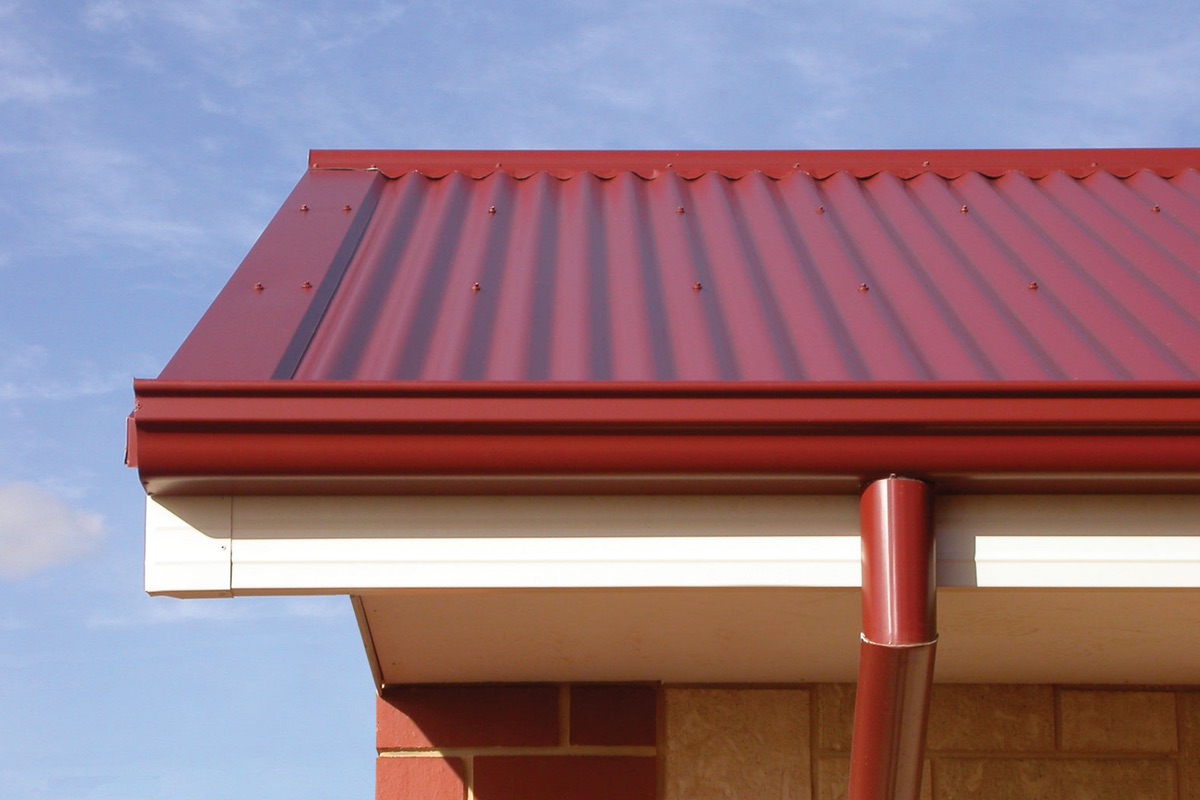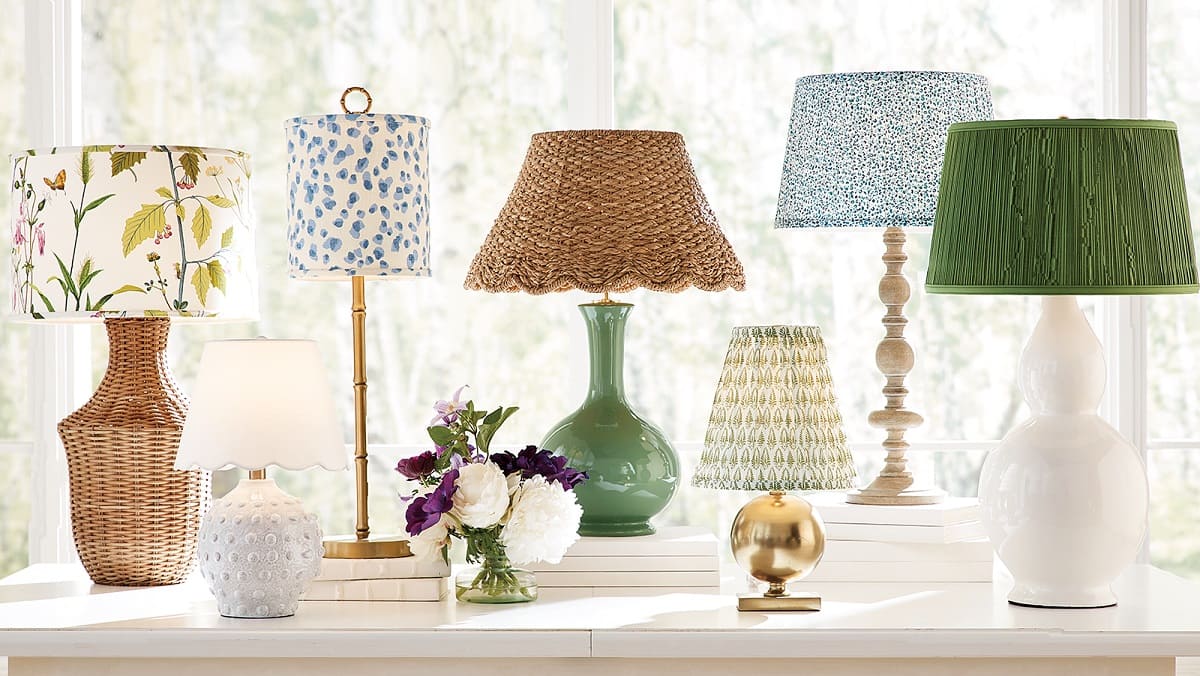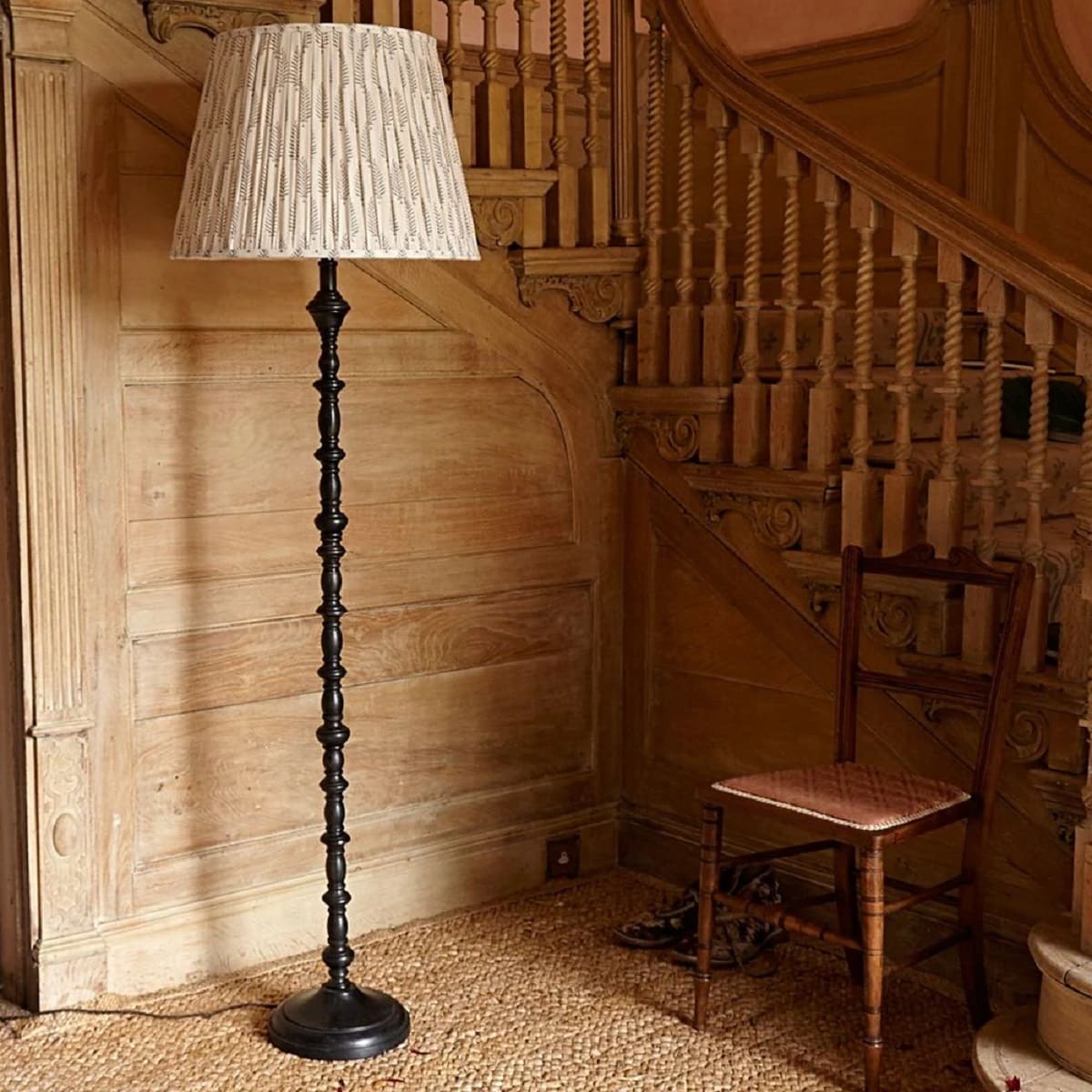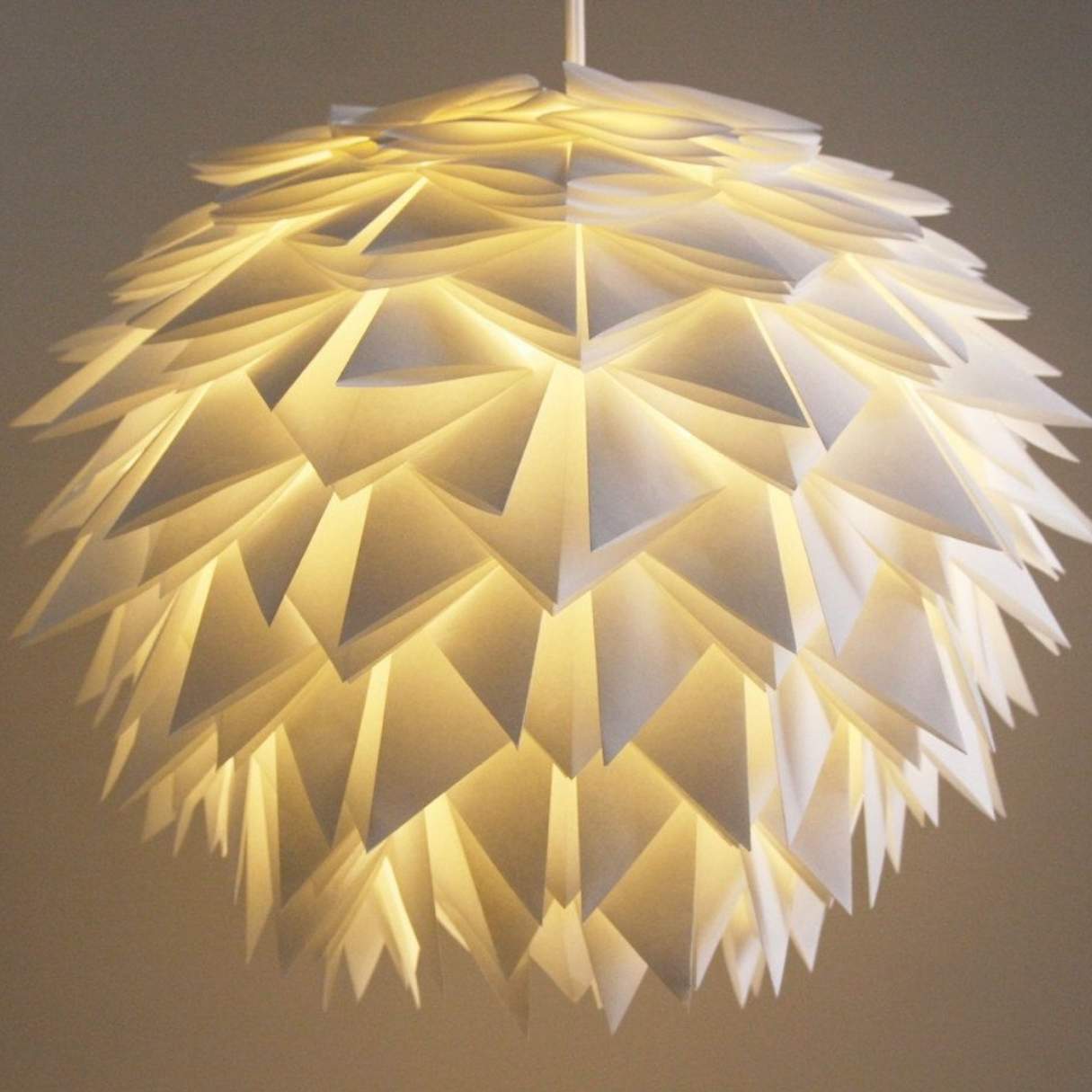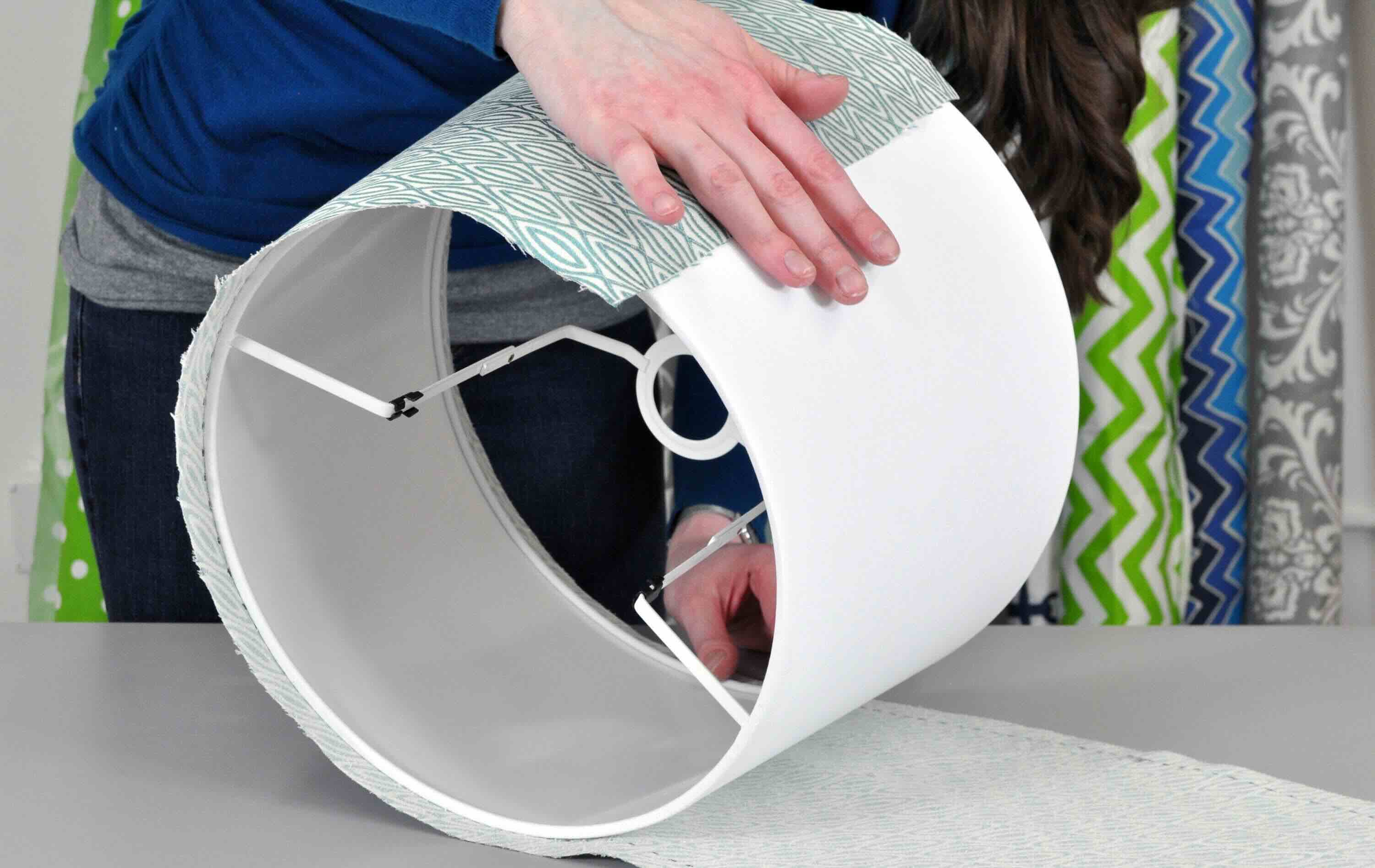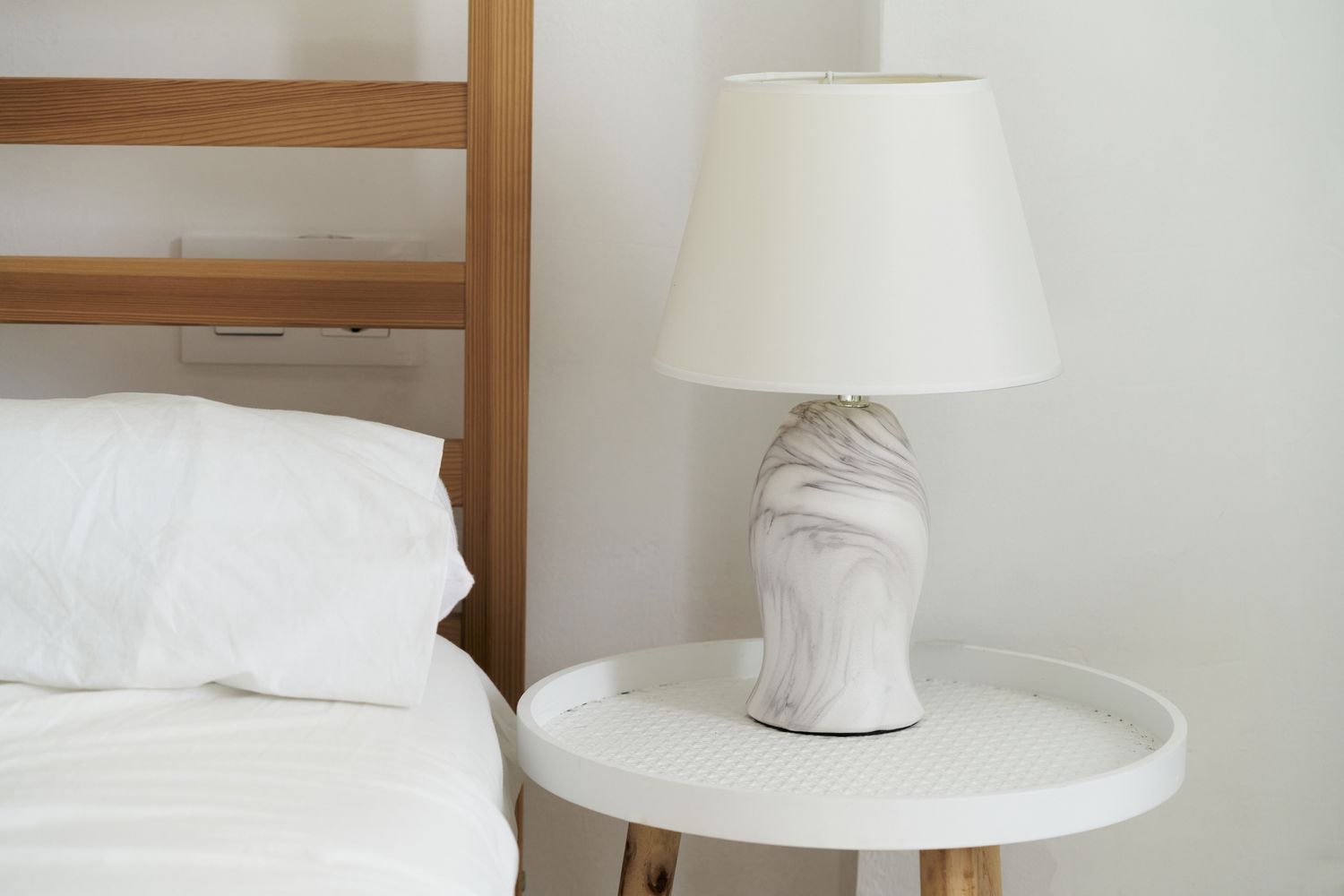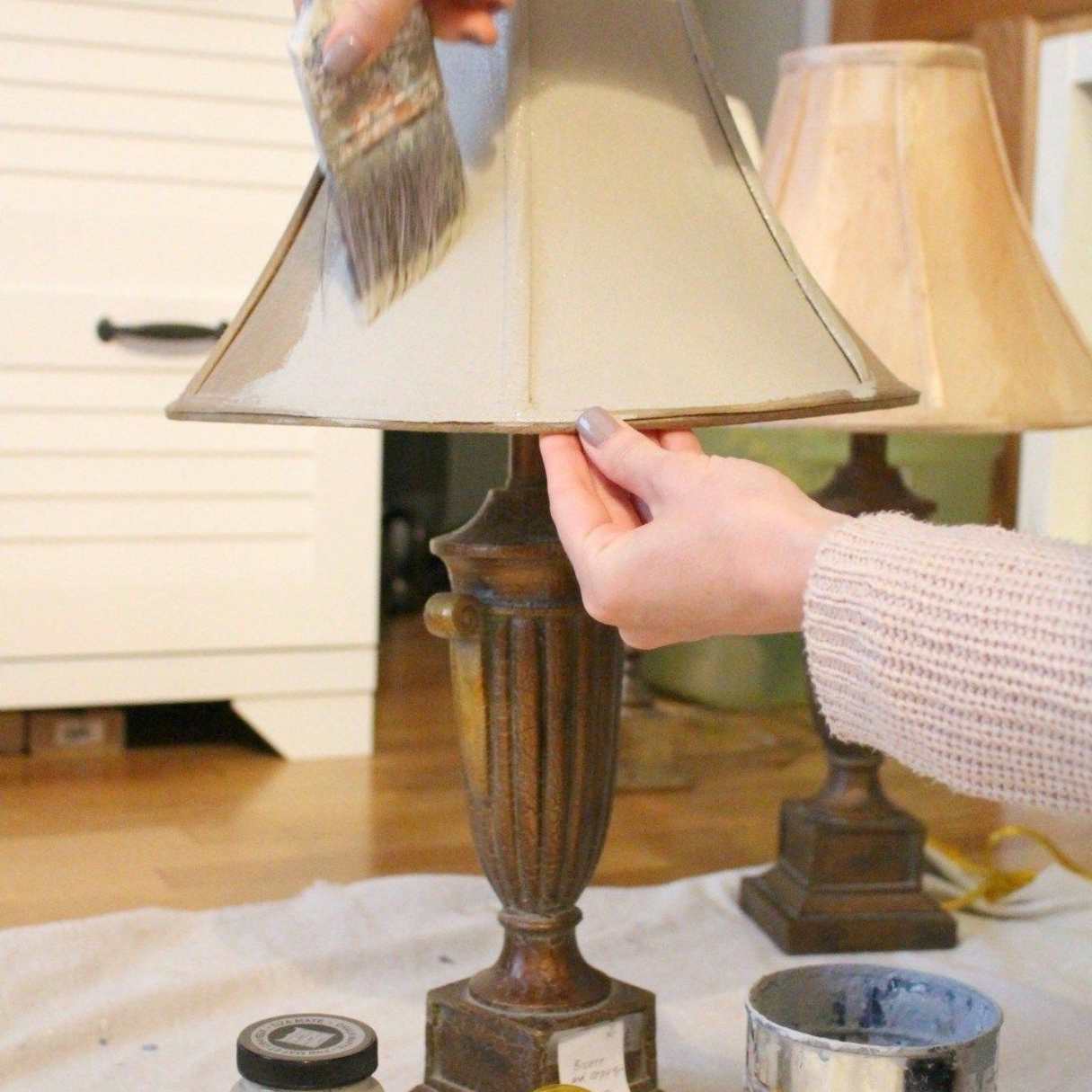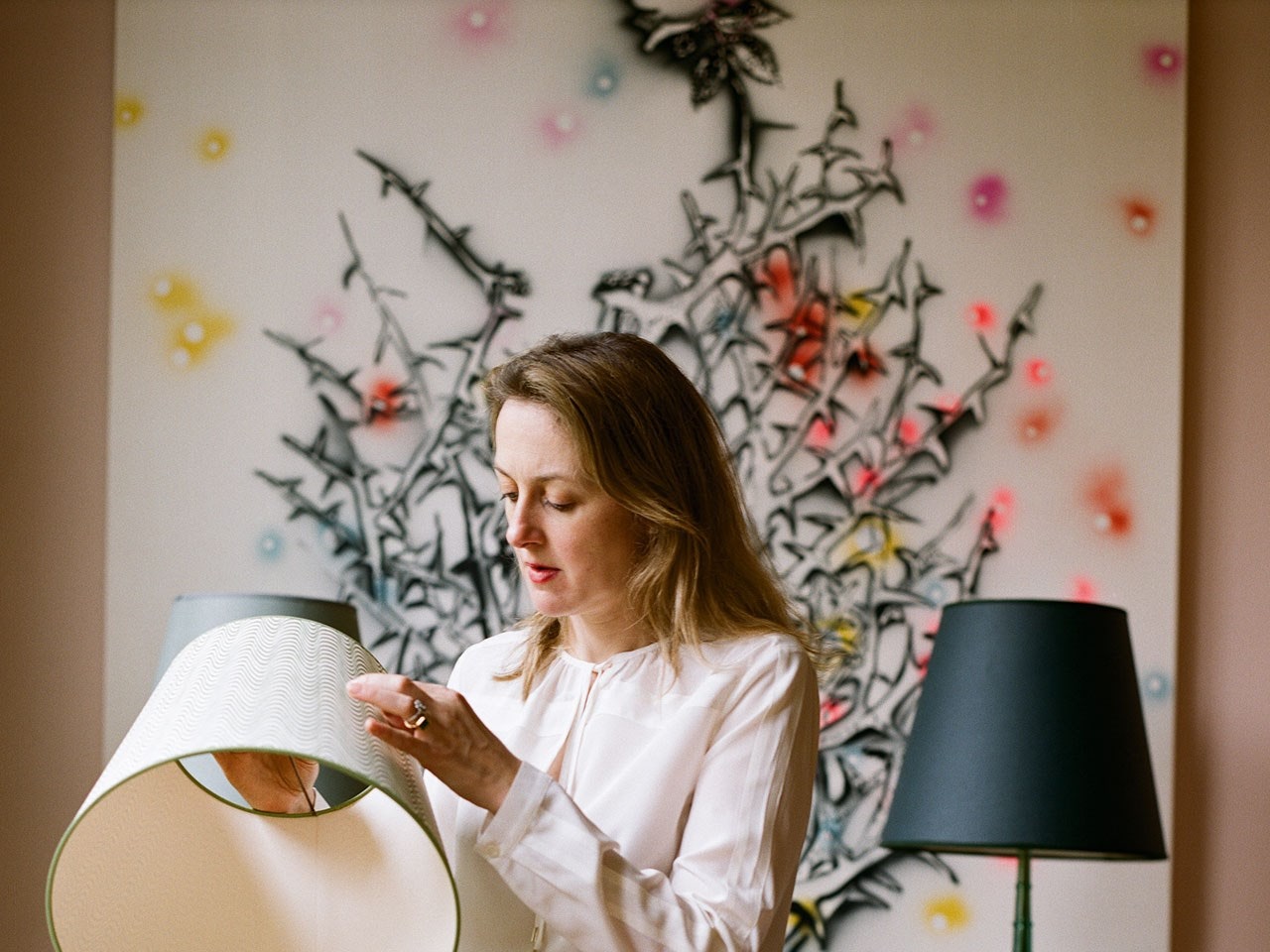

Furniture
What Color Lamp Shade To Choose
Modified: September 2, 2024
Struggling to choose the right lamp shade color for your furniture? Discover expert tips and advice on selecting the perfect shade to complement your interior décor.
(Many of the links in this article redirect to a specific reviewed product. Your purchase of these products through affiliate links helps to generate commission for Storables.com, at no extra cost. Learn more)
Introduction
Choosing the right lamp shade is an essential part of interior design that can greatly impact the ambiance and aesthetic appeal of a room. The color of the lamp shade, in particular, plays a crucial role in setting the mood and tone of the space. It can either complement the existing decor or serve as a bold statement piece.
When it comes to selecting the color of a lamp shade, there are various factors to consider, such as the room’s color palette, the purpose of the lamp, the material of the shade, and personal style preferences. By carefully considering these elements, you can ensure that the lamp shade blends seamlessly with the overall aesthetic and enhances the visual appeal of the room.
In this article, we will provide comprehensive guidance on choosing the right color lamp shade. Whether you are looking to add a pop of color to a neutral space or create harmony with the existing decor, we have got you covered. So, let’s dive in and explore the world of lamp shade colors!
Key Takeaways:
- Consider the room’s color palette and the lamp’s purpose when choosing a lamp shade color to create a harmonious and visually appealing space that reflects your personal style and enhances the room’s ambiance.
- Trust your instincts and consider practical tips to confidently choose the right color lamp shade that complements your existing decor, creates the desired mood, and reflects your individual style.
Read more: What Is A Spider Lamp Shade
Consider the Room’s Color Palette
When selecting a color for your lamp shade, it is important to take into consideration the existing color palette of the room. The lamp shade should complement the hues already present in the space, creating a harmonious and balanced look.
If your room has a predominantly neutral color scheme, such as whites, grays, or beiges, you have the freedom to choose a lamp shade in a vibrant and bold color. It will act as a statement piece, adding a pop of color and visual interest to the room. Consider shades like deep blues, emerald greens, or rich burgundies to create a captivating focal point.
On the other hand, if your room already has vibrant and bold colors, a neutral or subtle shade could work best to maintain balance. Opt for shades in creams, light grays, or soft pastels, which will complement the existing color palette without overwhelming the space.
For rooms with a monochromatic color scheme, where different shades of a single color are used, selecting a lamp shade in a similar hue can create a cohesive and sophisticated look. It allows the lamp to blend seamlessly with the surroundings, adding a touch of elegance and refinement.
Don’t be afraid to experiment with complementary colors as well. These are colors that are opposite each other on the color wheel, such as blue and orange or purple and yellow. Adding a lamp shade in a complementary color can create a bold and striking contrast in the room, making the lamp a focal point of attention.
Remember, the goal is to create a cohesive and harmonious look. Take cues from the existing color palette and choose a shade that complements and enhances the overall aesthetic of the room.
Determining the Purpose of the Lamp
Before choosing a color for your lamp shade, it is important to consider the purpose of the lamp and how it will be used in the room. Different lamps serve different functions, and the color of the lamp shade can contribute to enhancing its intended purpose.
If the lamp is mainly used for task lighting, such as reading or working, it is recommended to go for a light-colored shade. Lighter shades allow for better illumination and provide a brighter and more focused light. Shades in white, cream, or light beige are ideal for task-focused lamps as they maximize the amount of light that is emitted from the lamp.
On the other hand, if the lamp is primarily used for ambient or mood lighting, you have more flexibility in choosing a lamp shade color. Ambient lighting is meant to create a cozy and relaxing atmosphere, so you can experiment with softer and warmer colors. Shades in shades of yellow, tan, or soft pastels can create a soothing and inviting ambiance in the room.
If your lamp has a decorative purpose, such as a statement piece or an accent piece in the room, you have more freedom to choose bolder and more vibrant colors. This is especially true for lamps that are used as a focal point in the room or that have unique and intricate designs. Consider shades in bold colors like red, orange, or deep blues to make a bold and eye-catching statement.
Ultimately, the purpose of the lamp will guide your color selection. Consider how the lamp will be used in the room and choose a shade color that aligns with its intended functionality.
Understanding Different Shade Materials
When choosing a lamp shade, it’s important to consider not just the color but also the material it is made from. Each material has its own unique qualities that can affect the way light is diffused and the overall look and feel of the shade.
Fabric lamp shades are a popular choice as they add a soft and elegant touch to the room. They come in a variety of colors and patterns, allowing for endless possibilities when it comes to coordinating with your existing decor. Fabric shades can be made from materials like silk, linen, or cotton, each offering its own distinct texture and appearance.
Metal lamp shades, on the other hand, give a more contemporary and industrial look. They are often found in sleek and modern designs, providing a metallic sheen that can create a polished and sophisticated atmosphere. Metal shades can be made from materials like aluminum, stainless steel, or brass, adding a touch of glamour to your space.
Glass lamp shades offer a timeless and versatile option. They can range from clear glass to frosted or colored glass, allowing for different levels of light diffusion. Glass shades can create a classic and refined look, especially in vintage or traditional interior styles.
Paper lamp shades are lightweight and often come in neutral or earthy tones. They give a gentle and diffused light, creating a warm and cozy atmosphere. Paper shades can be a cost-effective option and are commonly found in Asian-inspired or minimalist designs.
Other materials such as wood, bamboo, or acrylic can also be used for lamp shades, providing a unique and natural element to your space. These materials are often seen in rustic or bohemian-style interiors, adding warmth and texture to the overall decor.
Consider the style and atmosphere you want to achieve in your room when choosing the material for your lamp shade. Take into account the functionality, durability, and maintenance requirements of each material to ensure it suits your needs.
By understanding the different shade materials available, you can choose a shade that not only complements your desired color but also enhances the overall aesthetic of your room.
Choosing the Right Type of Lamp Shade
When selecting a lamp shade, it’s not just about the color and material, but also the type of shade that will best suit your lamp and your overall design aesthetic. Different types of shades can create varying effects, diffuse light differently, and have their own unique style.
One popular type of lamp shade is the drum shade. This type of shade has a cylindrical shape with equal top and bottom diameters. Drum shades provide a contemporary and clean look, making them a versatile choice for various interior styles. They can work well in both large and small spaces and provide a balanced distribution of light.
If you prefer a more traditional and romantic look, consider a bell-shaped shade. Bell shades have a wider bottom and narrower top, allowing for a focused downward light and a softer glow. They add an elegant and classic touch, suiting vintage or formal interior designs.
For a more unique and artistic flair, go for a cone-shaped shade. Cone shades are wider at the bottom and taper towards the top, allowing for an interesting interplay of light and shadow. They can create a dramatic effect, especially in accent or statement lamps.
Another popular option is the empire shade. Empire shades have a more tapered shape, with a wider bottom and a narrower top. They offer a traditional and formal look, often seen in traditional or transitional interiors. Empire shades provide a focused downward light while diffusing a soft glow in the surrounding space.
Consider the size and scale of your lamp when choosing the type of shade. Larger lamps with a strong base can handle bigger and more elaborate shade designs, while smaller lamps may benefit from simpler and more understated shades.
Remember to also take into account the functionality of the shade. Some shades offer directed or task lighting, while others provide ambient or diffused lighting. Think about the purpose of your lamp and the type of light you want it to emit when selecting the shade type.
By choosing the right type of lamp shade, you can enhance the overall style and functionality of your lamp while complementing your chosen color and material.
Read more: What To Do With An Old Lamp Shades
Factors to Consider When Selecting a Color
Choosing the right color for your lamp shade is a crucial decision that can greatly impact the overall look and feel of a room. To make the best choice, there are several factors to consider that will help you achieve a harmonious and visually pleasing result.
First and foremost, consider the color psychology and the mood you want to create in the room. Colors have the power to evoke different emotions and feelings. For example, warm colors such as red, orange, and yellow can create a cozy and energetic atmosphere, while cool colors like blue, green, and purple can convey calmness and tranquility. Understanding the mood you want to establish will guide you in selecting the appropriate color for your lamp shade.
Take into account the natural lighting in the room. If the space receives a lot of natural light, the lamp shade color may appear differently throughout the day. Consider how the color will look during the day and at night, under artificial lighting. Test different shades in the actual space to see how they interact with the existing lighting conditions.
It’s essential to consider the visual weight and balance of the lamp shade color in relation to the rest of the room. Darker shades tend to have more visual weight and can make a bold statement, while lighter shades have a lighter and more airy appearance. Ensure that the color of the lamp shade harmonizes with the other elements in the room, such as the furniture, walls, and accessories, to create a cohesive and balanced look.
Factor in the size and scale of the lamp and the room itself. In smaller spaces, using lighter-colored lamp shades can help create an illusion of openness and brightness. Conversely, larger rooms can accommodate a wider range of colors, both light and dark. Consider how the color of the lamp shade will impact the perceived size and scale of the room.
Lastly, consider the longevity and versatility of the color. While trendy colors may be appealing for a short period of time, they can quickly become outdated. Opting for timeless and neutral shades, such as whites, creams, or grays, can ensure that your lamp shade will seamlessly blend with changing trends and remain relevant for years to come.
By carefully considering these factors, you can select a lamp shade color that enhances the mood, lighting, balance, and overall aesthetic of the room, resulting in a visually pleasing and harmonious space.
Consider the overall color scheme of the room when choosing a lamp shade. A neutral shade can complement any decor, while a bold color can add a pop of personality.
Popular Color Trends for Lamp Shades
Color trends for lamp shades can change from year to year, reflecting the evolving tastes and preferences of interior design. Staying up-to-date with the latest color trends can help you make a stylish and modern choice for your lamp shade. Here are some popular color trends for lamp shades that you can consider:
1. Neutrals: Neutral colors are timeless and versatile, making them a perennial favorite for lamp shades. Shades of white, cream, beige, and gray offer a clean and elegant look that complements any decor style. Neutrals create a sense of calm and can act as a beautiful backdrop for other vibrant elements in the room.
2. Earth Tones: Earthy hues inspired by nature are gaining popularity in interior design. Shades of brown, tan, terracotta, and moss green bring a sense of warmth and tranquility to a space. Earth tones can create a cozy and grounding atmosphere, especially in rooms with natural or rustic elements.
3. Jewel Tones: Rich and vibrant jewel tones continue to be a trendy choice for lamp shades. Deep blues, emerald greens, royal purples, and ruby reds add a luxurious and dramatic touch to a room. These colors can create a captivating focal point and infuse the space with a sense of richness and opulence.
4. Pastels: Soft and delicate pastel shades are perfect for creating a light and airy atmosphere. Shades of blush pink, baby blue, mint green, and lavender bring a touch of serenity and femininity to a room. Pastels work well in rooms with a romantic or vintage-inspired aesthetic.
5. Metallics: Metallic colors like gold, silver, and bronze add a touch of glamour and sophistication to any lamp. These shades offer a reflective surface that can bounce light around the room, creating a luminous and glamorous atmosphere. Metallic lamp shades work well in contemporary or eclectic interiors.
It’s important to note that while color trends can be a great source of inspiration, it’s equally important to choose a shade color that aligns with your personal style and preferences. Don’t be afraid to experiment and mix different colors to create a unique and personalized look for your lamp shade.
Remember, trends may come and go, but ultimately, the most important factor when selecting a color for your lamp shade is whether it brings you joy and enhances the overall aesthetic of your space.
Adding Contrast or Harmonizing with Existing Décor
When choosing the color of your lamp shade, you have the option to either add contrast or harmonize with the existing décor in your room. Both approaches can create a visually appealing and cohesive space, depending on the desired effect you want to achieve.
Adding contrast can make a bold statement and draw attention to the lamp as a focal point in the room. If your existing décor features predominantly neutral colors, a lamp shade in a vibrant or darker hue can serve as a striking contrast. For example, a lamp with a black shade in a predominantly white room can create a dramatic and eye-catching effect. This contrast adds depth and visual interest to the space.
On the other hand, harmonizing the color of your lamp shade with the existing décor can create a sense of cohesion and unity in the room. You can achieve this by selecting a shade color that is similar or complementary to the colors already present. For instance, if your room has a blue and white color scheme, opting for a lamp shade in a soft shade of blue can create a harmonious look.
Consider the overall mood and atmosphere you want to create in the room. If you aim for a calm and serene ambiance, harmonizing the lamp shade color with the existing décor can help establish a sense of balance and tranquility. If you prefer a dynamic and vibrant atmosphere, adding contrast through a lamp shade in a vivid or contrasting color can create an energetic and bold impact.
Another approach is to consider the texture and pattern of your existing décor. If your room has a variety of textures, such as rough textiles, smooth surfaces, or patterned elements, you can choose a lamp shade with a similar texture or pattern to create a cohesive look. This can be achieved through selecting a shade made of a textured material or one with a pattern that complements the existing decor.
Remember to take into account the size and scale of the lamp shade and how it relates to the other elements in the room. A lamp shade that is too small or too large in proportion to the rest of the space can disrupt the visual harmony.
Ultimately, whether you choose to add contrast or harmonize with existing décor, the goal is to create a cohesive and visually pleasing environment. Consider your personal style, the desired atmosphere, and the overall aesthetic of the room to make the best decision for your lamp shade color.
Considering Personal Style and Preferences
When choosing the color of your lamp shade, it’s important to consider your personal style and preferences. Your lamp shade should reflect your individual taste and contribute to the overall aesthetic of your space.
Start by examining your personal style. Are you drawn to bold and vibrant colors, or do you prefer more subdued and neutral tones? Consider the colors that make you feel happy and inspired. Your lamp shade color can be an extension of your personality and a way to express your unique style.
Think about the overall theme or design style of your room. Whether it’s modern and minimalist, traditional and ornate, or bohemian and eclectic, your lamp shade color should align with the overall vibe of the space. Consider the colors and patterns that are commonly associated with your chosen style, and choose a shade color that complements and enhances that aesthetic.
Don’t be afraid to step outside the box and be adventurous with your color choices. If you have an eclectic and playful style, you might opt for a lamp shade in a vibrant and unexpected color. On the other hand, if you have a more classic and timeless style, you might lean towards a neutral color that can easily blend with changing trends and decor.
Consider your preferences for light and atmosphere. Some individuals prefer a warm and cozy ambiance, while others prefer a bright and energetic atmosphere. The color of your lamp shade can contribute to the lighting effect and mood of the room. Experiment with different colors to see how they make you feel and how they interact with the lighting in your space.
It’s also important to consider the functionality of your lamp. If you primarily use your lamp for reading or task lighting, you may prefer a lighter shade color that allows for better illumination. If your lamp is more decorative and serves as an accent piece, you have more freedom to choose a color that complements the overall design and adds visual interest.
Ultimately, your lamp shade color should be a reflection of your personal style, preferences, and the overall concept of your room. It should bring you joy and enhance the overall aesthetic of your space, making it uniquely yours.
Read more: How To Put A Lamp Shade On
Practical Tips for Choosing the Right Color Lamp Shade
Choosing the right color lamp shade may seem like a daunting task, but with some practical tips, you can make an informed decision that enhances your space. Consider the following tips to help you choose the perfect color lamp shade:
1. Assess the existing color palette: Take a close look at the colors already present in your room. Consider the wall color, furniture, and accessories. Choose a lamp shade color that complements and harmonizes with these existing hues, creating a cohesive and visually appealing space.
2. Test the shade color: Before making a final decision, test out different shade colors in the actual space. Lighting affects how colors appear, so observe how the shade color looks under both natural and artificial lighting conditions. This will help you determine if the color complements your room’s ambiance.
3. Consider the room’s purpose: Think about the intended use of the room and how the lamp will contribute to that purpose. Is the room a workspace, a cozy reading nook, or a place for relaxation? Choose a lamp shade color that aligns with the room’s purpose and creates the desired mood or atmosphere.
4. Take cues from the room’s style: Consider the overall style and theme of the room when selecting a lamp shade color. For a modern and minimalist space, choose shades in neutral or monochromatic colors. For a bohemian or eclectic room, opt for shades in vibrant or patterned colors to add visual interest.
5. Use contrast strategically: If you want to make a statement or create a focal point, consider using a lamp shade color that contrasts with the surrounding decor. A bold and vibrant shade color against a neutral backdrop can add drama and visual impact.
6. Consider the lamp base: Take into account the color and material of the lamp base. Ensure that the shade color complements the base, creating a harmonious combination. A well-coordinated lamp base and shade can elevate the overall aesthetic of the lamp.
7. Keep longevity in mind: Trends come and go, so consider selecting a lamp shade color that will stand the test of time. Opting for classic and versatile shades such as neutrals, earth tones, or timeless hues can ensure that your lamp will remain stylish even as trends evolve.
8. Trust your instincts: Ultimately, trust your instincts and intuition when choosing a lamp shade color. Select a color that resonates with you and brings joy to your space. Your personal taste and preferences are crucial in creating a home that reflects your individual style.
By following these practical tips, you can confidently choose the right color lamp shade that enhances your room’s aesthetic, complements your existing decor, and creates the desired mood and ambiance.
Conclusion
Choosing the right color lamp shade is a crucial aspect of interior design that can significantly impact the overall look and feel of a room. By considering factors such as the room’s color palette, the lamp’s purpose, and your personal style and preferences, you can make an informed decision that enhances the visual appeal and functionality of your space.
When considering the room’s color palette, take into account whether you want to add a pop of color, create harmony, or make a bold statement. Understanding the mood and atmosphere you want to create will guide your color selection process.
Additionally, determining the purpose of the lamp is vital in selecting the right color. Consider whether the lamp is meant for task lighting, ambient lighting, or as a decorative statement piece. Each function requires a different approach to color selection.
Understanding different shade materials is another crucial aspect. Consider the characteristics and visual effects of materials such as fabric, metal, glass, paper, and various others to determine the right material to complement your color choice.
The type of lamp shade you choose will also impact the overall look and style of your space. Drum shades, bell shades, cone shades, and empire shades each offer a distinct aesthetic that can coordinate with the existing decor and contribute to the overall design theme.
When it comes to choosing the color of your lamp shade, consider factors such as the room’s color palette, natural lighting, visual weight, and your personal preference. These considerations will help you determine whether you want to add contrast or harmonize with the existing decor.
Lastly, trust your instincts and consider practical tips such as assessing the room’s purpose, testing shade colors, and considering the room’s style and the lamp base. These tips will help guide you in selecting a color that suits your space and reflects your personal style.
In conclusion, choosing the right color lamp shade requires careful consideration of the room’s color palette, the lamp’s purpose, personal style and preferences, and practical tips. By aligning these factors, you can create a visually appealing and harmonious space that reflects your unique style and enhances the overall ambiance of your home.
Frequently Asked Questions about What Color Lamp Shade To Choose
Was this page helpful?
At Storables.com, we guarantee accurate and reliable information. Our content, validated by Expert Board Contributors, is crafted following stringent Editorial Policies. We're committed to providing you with well-researched, expert-backed insights for all your informational needs.
